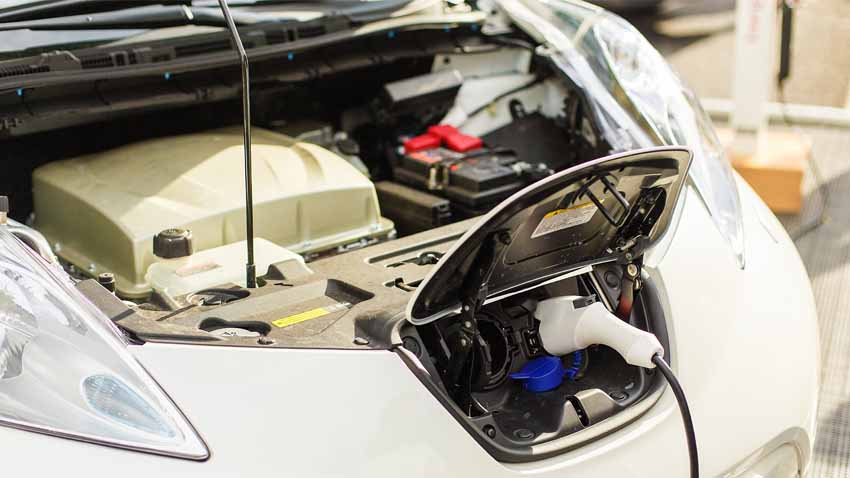
The battery is the heart of any electric vehicle. It is also at the heart of many of the challenges facing EVs, as the world's governments try to navigate a route to emissions-free driving. The battery accounts for an astonishing 40-60% of the cost of each vehicle. Batteries are expensive to make and, as they are very heavy, they are also expensive to transport.
Hero
Your electric vehicle's battery is really the component that separates today's zero-emissions car from yesterday's gas-guzzler. It is the part that enables your car to store the electricity that powers it. Without it, your car would not be whisper-quiet; it would not be emission-free and, of course, it wouldn't go. Three cheers for the all-important battery.
Or villain
Implications for cost of ownership
We've already touched on how the prices of batteries impact the cost of a vehicle, but the economic aspects don't end there.
Manufacturers currently estimate that electric vehicle batteries should have lifetimes of between 10 and 20 years. Because electric cars, as we now know them, are still a relatively new thing, it is very difficult to give accurate predictions. Batteries have evolved since early trailblazers like the Nissan Leaf first took to the roads, so those older batteries are of limited value as a benchmark. It will be some time before a clear picture of average, real-world battery life emerges.
There is no doubt that some batteries will fail. In some cases that may be due to manufacturing or design defects, in which case warranties may be expected to cover the cost. In other cases the failure may be due to events covered by insurance. However, there will inevitably be occasions when battery failure is attributed to wear and tear or misuse. In these cases, or in any other where the car owner will have to foot the bill, that bill could be anything up to £15,000. In comparison, replacing a leaky petrol tank tends to cost under £500.
The lesson to take away from these figures is obviously "Look after your battery".
Weight problems
Electric cars are heavy. Compared to a petrol car of similar size, an electric car may be heavier by hundreds of kilograms. This will translate to additional wear and tear on load-bearing components and friction points. Things like suspension, wheel bearings, brakes and tyres are being asked to work harder, which means they will wear out quicker. Once again, it's still early days when it comes to calculating the implications for maintenance and cost.
Free of fuel emissions, not of all emissions
The impact of vehicle and battery weight on tyres and brakes has received particular scrutiny on environmental grounds. Tyres and brake discs/pads shed polluting particles as they degrade due to friction. As we have seen, heavy batteries mean heavy cars and more weight means more friction; consequently more particles are released into the environment. This particulate pollution tends to float about at a height where it can easily be inhaled by people, especially children. The health implications linked to this kind of pollution include increased probability of heart attack, strokes and respiratory disease.
Not that simple
At this point, the reader could be excused for thinking we're compiling a tabloid-style list of arguments against electric cars but we're not.
We accept the realities of climate change and air pollution and the strong likelihood that human activity causes or accelerates the consequences. We accept that the world's oil reserves are finite and will run out. Even if we wanted to stick with petroleum-based internal combustion, it is not a long-term option.
The issues we have mentioned so far are not arguments against EVs, they are problems to be addressed and solved. We don't need to stop building electric cars and batteries: we need to build them better and greener. Improving the heavy batteries that power them should be top of the list of priorities. Reassuringly, it already seems to be.
The battery of the future
A very significant improvement to EV battery technology seems close. A number of manufacturers have been working on solid-state battery technology and adapting it for use in vehicles.
Solid-state batteries offer greater energy storage density than current lithium-ion batteries. Basically, a solid-state battery will hold more "juice" than a conventional EV battery of the same size. It will also last longer, charge quicker and be smaller, lighter and more reliable. Crucially, solid-state batteries are also safer than their lithium-ion counterparts, as their high thermal stability means a greatly reduced risk of fire or explosion.
Toyota has announced that it intends to have solid-state car batteries ready to release to market by 2027 or 2028. Where current electric cars struggle to manage a range of 700km, Toyota claims that its solid-state batteries will deliver up to 1200km on a single charge.
Meanwhile...
Although the news from Toyota and others is very encouraging, the actual product is not yet powering our cars. For the time being, the best thing we can do is to maintain our car batteries in the best possible condition. Here are a few tips from car and battery manufacturers.
How to look after your car's battery
- Avoid fast-charging whenever possible
- Avoid nearly draining the battery and then fully charging if you can avoid it
- Maintain charge between 20% and 80% when possible
- Try to avoid exposing your battery to extremely high or low temperatures
Recycle/reuse
Nothing lasts forever. Eventually batteries do deteriorate or die, no matter how well we maintain them. Fortunately, neither lithium-ion and solid-state batteries need just be scrapped or sent to landfill at the end of their driving lives.
Like household alkaline batteries, car batteries can be recycled and an increasing number of businesses are finding lucrative opportunities in battery reclamation.
Alternatively, many batteries can be put to work, even when they are no longer suitable for use in cars. Jaguar Land Rover has announced plans to repurpose old car batteries to store surplus energy the national grid can't use at the time of generation and then to feed that power back into the grid at peak times.
The road ahead
While there are still many things to be done before electric cars become a real boon to environmental damage limitation, those things are being done, despite the apparent reluctance of governments to spend big money on the changes they preach. Luckily for all of us, there is money to be made by those who invest in improving electric vehicle technology. Although the health of our planet may not be foremost in corporate minds, profit certainly is, and so things are changing.
